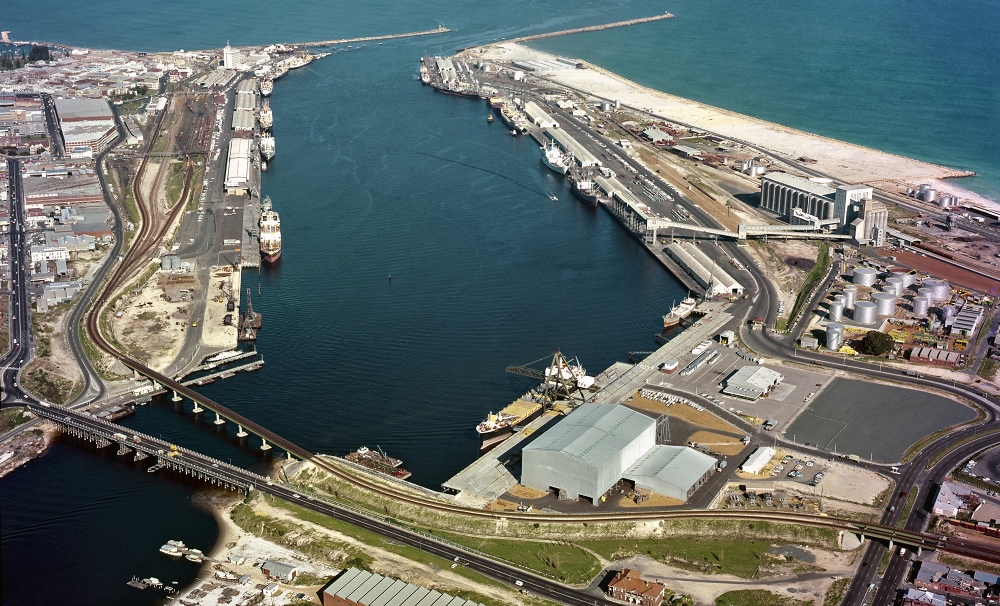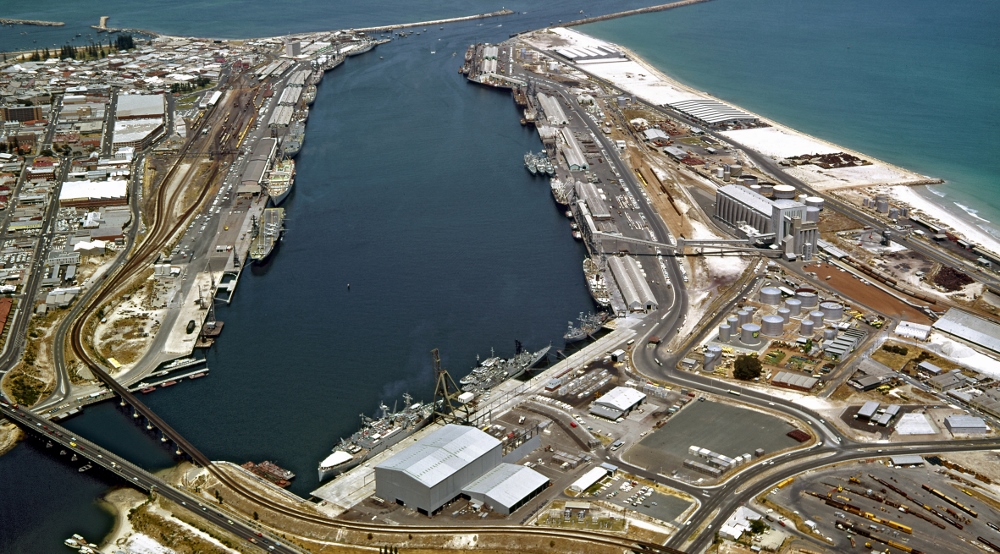Container Trade
Fremantle first in Australia to witness the global container revolution
Arrival of Encounter Bay 28 March 1969
The arrival of Overseas Container Ltd’s (OCL) Encounter Bay on its debut visit to Fremantle on 28 March 1969 was the beginning of the international container trade into Australia. The ship’s arrival heralded the nation’s entry into the global container revolution, which was at that time reshaping ports and logistics at major ports around the world. Labour-intensive stevedoring operations, where cargo was largely handled from ship to shore, were giving way to a new capital-intensive model.
Encounter Bay and its five sister ships were the culmination of a unique collaboration by four British shipowners who formed the consortium OCL in 1966 to initially undertake a feasibility study, then introduce a container service between Australia and Europe. Fremantle would see the first arrival!
Official Opening of Berth 12 Container Terminal 29 March 1969
The other significant event in March 1969 was the official opening of Fremantle Port’s first container terminal. This event was the culmination of the Port’s Up-River Extensions Scheme, which began in 1965 and involved significant creation and reconstruction of berth facilities, including the development of the new 12 Berth Container Terminal where Encounter Bay berthed.
The terminal was state of the art for its time. Western Australia’s then Premier The Hon. David Brand opened the facility to much fanfare. The new twin-lift locally built portainer crane was said to be the largest of its kind in the world and was later replicated in Melbourne, Sydney and Brisbane. The arrival of Encounter Bay at Fremantle and subsequent terminal opening was attended by dignitaries from around Australia and the UK, attracting significant media attention, with news cameras keen to capture the first container exchange from the vessel.
While sometimes overlooked now, Australia had already been a pioneer in the emerging container business, with the 3-ton seatainer format having been utilised from 1958 onwards as a precursor to the standard 20-foot container. This era of experimentation led to the construction of the purpose-built container vessel Kooringa which entered service in 1964 as the world’s first fully-cellular container ship.
Few at the Berth 12 official opening would have imagined the growth to come in future decades. Encounter Bay and ships of its day had a nominal capacity of around 1300 twenty-foot equivalent units (TEUs), which is a far cry from the 8500-9000 TEU ships that regularly call at Australian ports today.
It was, of course, the start of a new era. The transition to intermodal containers had far-reaching impacts upon commercial, industrial, technical and logistics aspects to the shipping industry, transforming the very nature of general cargo ports in the process. Fremantle was the first in Australia to witness the evolution.
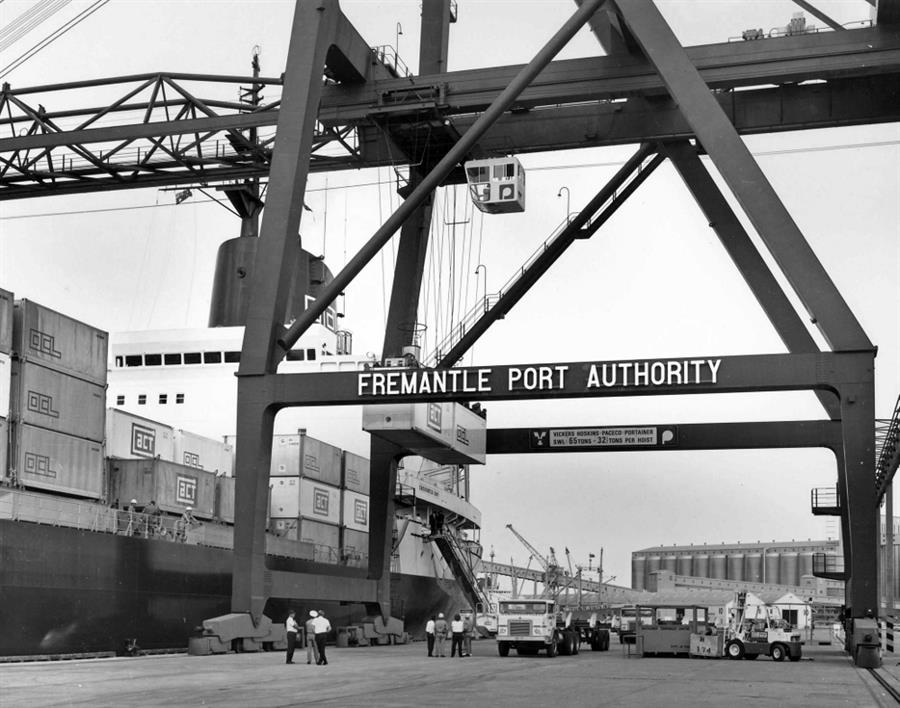
Evolution of containerisation at Fremantle
1956
The concept of a shipping container evolved in the United States. It was invented and patented in 1956 by American Malcolm McLean. Containers had been used prior to this but transported by rail.
1958 -1961
The Port of Fremantle played a pioneering role in the development of shipping containerisation in Australia. Because of lowered charges being offered by road and rail services, 3-ton containers were being experimented with and used at Fremantle and other Australian ports in an endeavour to improve efficiency and competitiveness in the interstate shipping service. This was a venture to revitalise national sea trade. The D containers were handled at Fremantle by conventional means and were transported alongside general break bulk cargoes. Captain Bob Leggat, who became Divisional Manager of Seatainer Terminals years later, played an important part in the development of the containerised cargo concept in Australia. This led to the building of the purpose-built container vessel Kooringa which came into service in 1964.
1962 - February
WA Premier David Brand opened McIlwraith McEacharn’s new Sea-Freight Terminal at North Fremantle, designed principally for the handling of shipments of ‘Seatainer’ (container) cargoes through Fremantle. The terminal was pivotal in revitalising national shipping services around the Australian coast. At the time, the terminal was considered the most modern installation of its kind in Australia, situated near the wharf with quick accesses by road and rail.
To assist the ‘Seatainer’ container service win back sea trade, the Fremantle Harbour Trust made substantive concessions in port charges to the pioneers of this service, McIlwraith McEacharn Ltd. The Harbour Trust also provided effective wharf handling and storage areas and easy road accesses to the new terminal.
1964 – June
Associated Steamships’ revolutionary all-container ship Kooringa made its debut in Fremantle, commencing the 14-day Fremantle to Melbourne and return cargo service. The Australian-built vessel was recognised as the world’s first purpose-built fully cellular container ship. It had two onboard gantry cranes for container handling and this method of operation was a forerunner to the future land-based portainer crane.
Kooringa had the capacity to handle 3-ton, 17-ton open and closed top containers including refrigerated, together with unique steel car crates for the carriage of set-up motor vehicles. Kooringa’s cargo was facilitated through McIlwraith’s North Fremantle terminal and an equally modern terminal in Melbourne. Kooringa was the forerunner of full containerisation at Fremantle in the following decades.
1965
The Up-River Extensions Scheme was well under way with the completion of the new railway bridge (September 1964) and associated standard-gauge rail upgrade. The old railway bridge was being demolished and the port’s new Small Craft Pens was built and in operation.
For the newly renamed Fremantle Port Authority (previously Fremantle Harbour Trust), the Up-River Extensions Scheme was the most significant project undertaken since its inception in 1903. It included the reconstruction of H Berth, the additional J Berth, new port accesses at Victoria Quay and North Quay and, most importantly, the innovated development of land east of Berth 10, formally Pearse Bros shoe factory. In the early stages of planning, it was envisaged to create three berths (11, 12 and 13) with three large transit sheds to handle a mix of container and general cargo. However, this soon changed due to the planned expansion of the existing national container trade and the introduction of overseas container services towards the latter part of the decade. A dedicated container terminal was to be built and would be known as 12 Berth Container Terminal.
1967
Almost simultaneously, in early 1967, Overseas Containers (London) Ltd and the Australian company Associated Steamships Pty (ASP) announced plans to build new cellular container ships. In OCL’s case it was six large 27,000 grt vessels to service the trade between Australia and the UK. Associated Steamships, in addition to the Kooringa, were to introduce two new vessels of 13,000 grt to service the interstate trade and provide feeder services for the new overseas vessels. ASP vessels would also operate out of the new Container Terminal at 12 Berth. The planned construction of 12 Berth would be carried out by Taylor Woodrow International under supervision of the Port Authority engineering staff. The length of the berth being constructed had been increased by 95 feet (29m) to accommodate safe berthing of larger seatainer vessels up to 745 feet (227m) in length. Substantial provision for a second berth (11 Berth) was made to meet the possible demands of the near future.
The twin lift portainer crane to be assembled at Fremantle was built locally by Vickers Hoskin Australia and was said to be the largest of its type in the world. The crane would be replicated simultaneously in Melbourne, Sydney and Brisbane. Seatainer Terminals Pty Ltd, jointly owned by OCL subsidiary Overseas Containers Australia Ltd and the Australian company Associated Steamships, was to operate and administer the Australian terminals and depots.
1969
28 March - The first overseas container vessel OCL’s Encounter Bay arrives at the 12 Berth Container Terminal.
29 March - Premier David Brand officially opens the 12 Berth Container Terminal.
31 March - The new Australian coastal container vessel ASP’s Kanimbla 13,312 grt arrives at the Container Terminal and joins its older smaller similar ship Kooringa on the interstate service.
13 April - Associated Containers Transportations (Australia), known as ACTA, vessel ACT 1 25,000 grt arrives from the UK.
12 May - Encounter Bay’s fellow ship Flinders Bay arrives at the Container Terminal from the UK.
And so, the journey begins for the Port of Fremantle’s first dedicated, wharf-based, container-handling facility.
The ‘quiet revolution of unitisation’ - While British shipowners appeared to favour full containerisation, or the so-called ‘pure’ container system, continental and Scandinavian owners had to date preferred unitisation as the method most suitable to their purposes. A unit load ship is a fast, intermediate-size vessel carrying some containers and a variety of break bulk. At the time of arrival of the first overseas container vessel, new unit-load ships were being put into service. The new Swedish unit-load vessel Atrevida arrived on its first visit to Fremantle in May 1968 and others were yet to follow in the coming years.
1970
Planning is underway for the reconstruction of Berths 6 and 7 to make them suitable to handle future roll on/roll off containerised and unitised cargo operations. Australia has always played a prominent role in the concept of containerisation going right back to the late 1950s. Evidence of this continues and was demonstrated on the arrival of ASP’s new container vessel Manoora. Among its cargo was an experimental consignment of ‘cartainers’. These open-sided metal boxes were each capable of holding three vehicles. By using the ‘twin-lift’ facility on the portainer crane it was possible to lift four cartainers simultaneously, no less than 12 vehicles in a single lift.
By April 1970 Seatainer Terminals reported that they had handled containers from 100 container ships visits, both from overseas and interstate, the honour of being the 100th vessel falling to OCL’s Botany Bay.
Three Scandinavian shipping lines combined their services in the Australia-to-Europe cargo trade forming ScanAustral which came into operation in July. Seven of its unit ships were ‘jumboised’ whereby a cellular section was added amidships to increase their container-carrying capacity. ScanAustral considered that the Australian/Europe trade required something more versatile than a purely cellular ship. Five large roll-on roll-off vessels, 20,000 tons deadweight, designed to carry containers and unit cargo, were to be built and delivered in 1972.
During the latter part of 1970 four continental shipowners formed a third consortium of container carriers. Seabridge Australia’s Europe-to-Australia service was scheduled to start in October with the arrival of Melbourne Express at Fremantle and Sydney Express at Sydney. They were closely followed by the vessels Kangourou and Abel Tasman in early 1971.
Sydney Express arrived at Fremantle in November 1970 and at the time was the largest container ship in the world.
1971
Pacific Australia Direct Line vessel Paralla arrived at Fremantle in February. It was a port first visit of the newly conceived roll-on roll-off (ro-ro) vessel which handled cargo including containers via an angled stern ramp. On 23 May, there was a record exchange of 506 containers from one overseas container ship, ACT 2. Major reconstruction of 6 &7 Berths including pile replacement, concrete decking, stacking areas and the building of a large transit shed was close to completion.
1972
Australian National Lines newest container ship Australian Exporter arrives on its first visit to Fremantle in August. This ship and its fellow ships had the largest capacities of refrigerated containers of any containership. ScanAustral’s new roll-on roll-off ship Tricolor arrived on its first visit to Fremantle in October. It was the first of five such Ro-ro ships to enter the Europe-Australia service by 1973. Major reconstruction of 8 Berth took place, including pile replacement, concrete decking, stacking areas and the building of a large transit shed.
1973
State Ship Nyanda and fellow ship Boogalla undertook major conversions to enable them to carry containers and unit loads to remote northern ports of WA. Together with unit load vessels Wambiri and Beroona they formed a completely revitalised State Shipping Service fleet.
1977
The 43,999 grt containership ACT 7 arrived on its first visit in August, setting a record for containerships with the capacity to carry 2002 container units. Malaysian International Shipping Corporation (MISC) vessel Bunga Teratai inaugurated a new container service linking Australia and South-East Asia in August. The new Fremantle Port Authority designed and constructed ro-ro ramp at 12 Berth came into operation in October with the arrival of hybrid container ship Anro Australia. It was the first of three ships built for the Anro Consortium of shipping lines and paved the way for greater trade opportunities between Australia and Asia.
1978
It was reported in mid-1978 that there had been an upsurge in container traffic at the Port of Fremantle in the previous 12 months. The first of three Japanese container vessels, K Lines’ Fremantle Venture, arrived on its first voyage in March. The fully containerised service was integrated with the existing break-bulk service provided by Shinkawa Maru and Norway Maru. Austiran Service was established to serve Sri Lanka, Pakistan and Persian Gulf ports. The first of four vessels, Opal Bounty, arrived at Fremantle in November. Knutsen Line expand their container-carrying capacity during the year with the introduction of two new multi-purpose vessels, the first being John Bakke. The Baltic Shipping Company and Polish Ocean Line were gearing up for the introduction of containers in their respective services to Eastern European ports. Blue Star Line introduce the fully cellular vessels Australia Star and New Zealand Star to the Persian Gulf trade. The world’s largest refrigerated carrying capacity containership Resolution Bay arrives at Fremantle. Seatainer Terminals expand their capacity to cater for the upsurge in container traffic. A record 30 containers of Swan Lager Beer were loaded onto P&O unit vessel Strathmore for Iraq Stores Company.
1979
A revival of the interstate container trade with the State Ships Beroona and Wambiri providing a service to Tasmania and Victoria was noted. This was further bolstered by the introduction of the new multiplex-designed vessel Kimberley, followed by Koolinda and Pilbara. ANL’s Townsville Trader also provides a similar service. For economic reasons at the time, coasters Kooringa, Kanimbla and Manoora were withdrawn from service in 1975.
1980
A first for Fremantle - Independent Wool Dumpers Pty Ltd introduced a new hydraulic wool press developed in WA. It had the capacity to press three undumped bales into a single unit. The volume of the bale unit is reduced and its shape and size enables shippers to obtain 97 per cent pay-load efficiency in a standard 20-foot container. The first shipment of Western Australian apples by container was successfully received in the UK and would lead to the export of other Australian horticultural products. ABC Line’s container vessels Antwerpen and Brussels are introduced. Taylor Woodrow begin a major reconstruction of 4 and 5 Berths to handle containerised cargo. Start of works for a new upgraded terminal for State Ships at 1 and 2 Berths. A new container-handling crane was planned and came into operation in 1983.
1982
A second portainer crane, constructed by Vickers Hoskin at a cost of $3.6m, is built and operational at 11 Berth in April. It was an improved version of Portainer 1 introduced in 1969.
1983
New cargo-handling facilities, including a portainer crane and container stacking areas, are officially opened at 4 and 5 Berths in September. The facility will be operated by Fremantle Cargo Services, a consortium of Mercantile Stevedores (WA), the East Asiatic Company of Denmark and Knutsen Line AS of Norway. Fremantle Cargo Services’ new operations centre building was designed by the Civil Engineering section of the FPA. The fibreglass facia panels were manufactured by the FPA. Boom gates are first installed at North Quay exit gates.
1984
Increased containerisation requires new and better equipped workshops to service the growing fleet of mobile plant. The Port Authority’s new mechanical workshop is completed and rises to 14 metres above the site where CBH shunted grain trains. State Ships largest-ever vessel Irene Greenwood arrives on its first visit to Fremantle. It was at the time the largest general cargo vessel engaged in the Australian coastal service. It provided a monthly reefer container and general cargo run from Fremantle to Tasmania and Victoria.
1985
The government decided that the Mangles Bay area adjacent to Rockingham was not a suitable site for a future Outer Harbour container facility and preferred options were at Catherine Point and adjacent to North Mole. It was estimated that by the year 2000, new facilities would be needed to handle about 175,000 containers. Continued growth of container cargoes is quite evident in both the Australian and overseas markets. Non-containerised cargoes have tended to decline, although import tonnages in motor vehicles, heavy machinery and timber have increased. Over 27,000 tonnes of WA wool skins and hides were exported to Italy over a 12-month period. The bales were compressed into 20-foot containers for shipment. New joint EAC-PNSL Fremantle to South East Asia service began in June with the arrival of container ships Meonia and Falstria. A new service linking Western Australia to New Zealand was introduced with the arrival of ANL’s container/unit vessel Australian Trader.
1986
During 1985-86, Fremantle set a record in handling 105,162 TEU for the year. Container traffic through Fremantle continues to be the third highest throughput in Australia. The arrival of the large super ro-ro vessel Barber Texas in May marked ScanCarriers announcement that Fremantle would be serviced every 30 days from Scandinavia and the North Continent. Barber Texas is claimed to be the largest ro-ro vessel in the world. Hoegh Lines of Norway extend their service of multi-purpose container ships to Fremantle and other ports with the arrival of their first vessel Hoegh Duke in May. The Norwegian Knutsen Line container ship Ragna Bakke departed port with a record load of Western Australian products in April. It was down to its marks as it headed to Hong Kong, Taiwan, Korea and Japan. The ro-ro vessel Freeway North inaugurates a new coastal ro-ro service to Port Hedland in December.
1987
Port celebrates 90th anniversary on 4 May. For the third successive year container traffic in all categories exceeded a total of 100,000 TEU, with 107,361 TEU being handled. State Ships start a three-weekly container/unit service to Port Moresby and Lae in April with the vessels Koolinda and Pilbara, returning through Brisbane and Melbourne. Container vessel Windward called at the Container Terminal to exchange a port record of 1483 containers, easily eclipsing the previous record. Port Authority’s Container Depot operation at 10 Berth North Quay handled a total of 1715 containers during the year while a further 991 L.C.L containers were unpacked in the FPA’s two other transit sheds at North Quay.
1988
Seafreight 2000 project is announced in October. The Inner Harbour will be dredged to provide for larger containers ships drawing up to 12.5 metres. The spoil will be used to create commercial real estate for port-related industries adjacent to North Mole at Rous Head. A small harbour for small commercial vessels will be built. State Ship Jon Sanders starts a container/unit cargo service to Cocos and Christmas Islands, Jakarta, Singapore, and the North West. ABC Containerline celebrates its 10th anniversary of operations at Fremantle and 200th ship visit with the berthing of TNT Express in May. For the fourth successive year, container traffic in all categories exceeded a total of 100,000 TEU, with more than 113,000 TEU being handled.
1989
The completion of a $30 million harbour deepening project at Fremantle has ensured the port’s status as ‘Gateway to Australia’. The Fremantle Inner Harbour was opened in 1897 and was deepened in 1929 from 9 metres to 11m. In 1989-90, the harbour was deepened to 13m for container ships with drafts of 12.5m. Dredged material from the deepening was reused to reclaim land at Rous Head for port-related industries. Rous Head Harbour was created for small commercial vessels.
Ro-ro vessel Tampa set a record for the ScanCarrier fleet when it berthed in Fremantle in July within a week of completion of the port’s $30 million harbour deepening project. It discharged 7,500 tonnes of containers and break-bulk cargo, the biggest quantity ever brought into port by any of the ScanCarrier’s nine vessels. Previously, when fully loaded Tampa would have had to bypass Fremantle as the pre-dredging depth of 11 metres would have been too shallow for it to enter port.
No 9 Berth to be reconstructed to extend the continuous length of container-handling quay by a further 177 metres giving a total length of 1180 metres from Berth 4; scheduled to be completed by 1991. The Mediterranean Shipping Company, based in Geneva, started using Fremantle on a regular basis when the container vessel Aurora berthed in Fremantle in November.
1990
The Port Authority cuts wharfage rates for landbridge cargo by 50 per cent in a move to attract more eastern Australian cargo through the port. ABC Containerline Agency was the first to benefit from this reduction in charges although it had been railing cargo from Fremantle to Adelaide for the previous 10 years. MSC increased the number of vessels calling at Fremantle to two. 31 shipping lines have vessels calling at Fremantle either weekly, fortnightly or monthly. 1989-90 was a record financial year for container handling which reached 132,000 TEU. The Port of Fremantle handled its 500 millionth tonne of cargo during August. The mark was reached during unloading of the new container ship Berlin Express. It was predicted to reach one billion tonnes of cargo in about 2010.
1991
Maritime Agencies, formally Wigmores Shipping, WA’s largest shipping agency, celebrates 80 years of service. The company’s major principals are ANL and K Line. Japan is a solid market for Midland Brick, which was expecting to export 1300 containers of bricks from Fremantle in the coming year, mainly to Japan. Peters WA signs a $40 million contract to export ice cream from Fremantle to Japan over the next five years. The French container ship LA Perouse left the Port of Fremantle in May with a record lifting from ports around Australia of 2070 containers. Seabridge Australia said the load represented the largest volume ever carried from Australia to Europe by one ship. The largest single commodity was wool in 440 containers.
Portainer 1, originally at 12 Berth, is in the process of being upgraded for future operations at Berths 4 to 9. The Port Authority announced the Ansell International will be the first major Australian company to use a new intermodal landbridging service to operate through the port. The service allows goods to be shipped from South-East Asia to be off-loaded in Fremantle for distribution by rail to the rest of Australia. Fremantle Port Authority has welcomed the establishment of the National Rail Corporation as a significant step in the development of intermodalism through the Port of Fremantle. National Terminals (Australia) has installed a 62-tonne lifting capacity container crane which arrived on board the vessel Dock Express at 8 Berth. The company operates a terminal at Berths 1 and 2 serving Stateships and other clients. A $8 million redevelopment at 8 and 9 Berths is underway which will establish container-working facilities and storage areas for National Terminals.
1992
The Port of Fremantle achieved a record container throughput for 1991-92 with 132,093 TEU recorded. Trade through Fremantle was boosted when Mediterranean Shipping Company announced the introduction of a new direct service to Europe. The new service will see a dramatic increase in cargo carrying capacity with six larger ships with 1500 TEU capacity being introduced.
Employees at Conaust Ltd recently set new records in TEU-handling rates and deadweight liftings in the Japanese trade at Fremantle. The achievement was recorded when Windward and Hanne Bakke were working simultaneously at Conaust’s Berths 4 & 5 and 11 & 12 terminals. It is reported that ships visiting Fremantle have now faster turnaround times due to increased efficiency in cargo handling. An independent study has named Fremantle as Australia’s best option as a national gateway for landbridging from South-East Asia and Europe. It was estimated that up to 45,000 containers a year could be landbridged between the west and east coasts of Australia. The study was announced by Prime Minister Paul Keating on a visit to the port in June.
Fremantle Port is now the first discharge port in Australia for Mediterranean Shipping Company’s container vessels from Europe, South Africa and the east coast of the United States. The arrival of Maria Laura in Fremantle in October marked the first MSC vessel to visit under the new arrangements. Fremantle will remain the State’s primary mixed cargo container port for at least the next 20-30 years, the State Minister of Transport announced in September. FPA’s container imports increased by a dramatic 29.2 per cent for the first quarter of 1992-93 compared with the same period the previous year. The growth in intermodal cargo is due to an increase in intermodal port cargo being railed to Adelaide and Melbourne. WLB Shipping announced a new fixed service into and out of Fremantle whereby Nedlloyd Lines and Malaysian International Shipping Corporation introduced a vessel-sharing arrangement which will allow cargo to be continuously transferred from container terminals in Fremantle to Singapore. 25,260 bottles of WA wine in 2105 cases were shipped to the UK on NedLloyd Tasman. This was part of an order to ship 7000 cases of wine from a winery in Mount Barker.
1993
History was made when container vessel Encounter Bay visited Fremantle in February for the 100th time since first arriving at the port’s first container terminal in March 1969. All cargoes shipped from Tasmania via Mitsui OSK Lines, bound for Mauritius, Reunion, South Africa and South America, are now shipped to Fremantle for transhipment, instead of Melbourne. One of Fremantle Port’s two major container terminal operators, Conaust Ltd, is developing a $700,000 container park which will add 40 per cent more space to Conaust’s current storage space. MSC announce a new service via Proline to Argentina and Brazil via Durban linking all Australian ports. MSC were also keen to promote that it has passenger accommodation (up to 12 passengers) on all its container ships passing through Fremantle. The creation of Australian Stevedores, a merger of Strang Patrick Stevedoring and National Terminals, will provide a consolidation of operations and a catalyst for increases in efficiency and competitiveness at Fremantle.
1994
Maersk West Australia Line introduces a new weekly shuttle service between Fremantle and Singapore with the container vessels Swan Reefer and Klang Reefer which will connect with Maersk’s global network offering WA shipping services to all parts of the world. Safbank Line, the largest carrier in the USA-South Africa trade, has agreed to exchange slots with MSC to provide a named-day weekly service between the USA and Canada, and South Africa and Australia for reefer and general cargoes. Both companies will be marketing the service independently. Container trade in the 1993-94 year exceeds expectations with 169,174 TEU handled, up 16 per cent from the previous year.
1995
Record container trade in the 1994-95 year with 189,300 TEU handled, up 11.9 per cent from the previous year.
1996
Work starts on the North Quay Consolidation Plan with the demolition of the ‘angled’ 3 Berth which will provide another 100m of berth length and provide berth space to the two major stevedoring companies. The planned expansion of the port’s container area would necessitate the closure and relocation of CBH’s facility, which includes the grain silos at North Fremantle, announces the Minister of Transport. In November, the Japanese NYK Line celebrates 100 years of shipping association with Australia.
P&O Ports celebrated the completion of consolidation of their container-handling areas into one container terminal at 4-6 Berths North Quay. A 21-year lease was signed with the Fremantle Port Authority. A new Noell container crane for P&O Ports arrives on the vessel Dock Express II. Patrick the Australian Stevedore will invest $40M on consolidated container terminal facilities over the next six years. Patrick had a lease on the land-backed area from Berth 7 to 10 NQ with options for extended lease areas to allow terminal growth well into the next century.
A new weekly service linking Fremantle and Singapore started with the arrival of Pacific International Lines container vessel Kota Harta in April. The service offered transhipment opportunities to East Africa, Mauritius, Middle East, India, East Malaysia and China. Fremantle’s third stevedore, Western Stevedores, started operations in April. Container trade at Fremantle has grown nearly 60 per cent over the past four years with 202,680 TEU handled in the 1995-96 year. Contship Containerlines’ newest ship, Contship Romance, became the deepest draft container ship to enter Fremantle with a maximum draft of 12.8m when fully loaded.
MSC Carla became the longest container ship to berth in Fremantle at 289.5m and has a capacity to carry 3054 containers. An increase in demand for shipping space to Northern Europe will see a new generation of deeper draft vessels sailing under the Contship flag calling at Fremantle later in the year.
1997
A new weekly fixed-day service to Singapore has been established by NYK Line in conjunction with previous Anro Consortium partners. Mitsui OSK Line Australia set up a branch office in Fremantle.
In a world first, FPA extends Dynamic Under Keel Clearance technology to container ships in the Fremantle Inner Harbour, giving it one of the best draft abilities among Australia’s major ports. (FPA had introduced DUKC for BP in 1994.) Fremantle Port Inner Harbour celebrates 100 years of history and progress. Australian National Line’s new containership start the Australia Asia Xpress service between Australia and South East Asia. A record 209,564 TEU were handled at Fremantle in the 1996-97 year.
1998
Maersk West Australia Line’s container vessels Swan River and Klang Reefer each celebrate their 100th visits to Fremantle. Patrick The Australian Stevedore’s third container crane arrives at Fremantle on the vessel Happy Buccaneer. K-Line/Bakke Shipping increased its WA service from fortnightly to a new fixed day weekly service operating between Japan, Singapore-Straits and Fremantle. A record 250,802 TEU were handled at Fremantle in the 1997-98 year. National Rail starts a bi-weekly container landbridging service between Fremantle Harbour’s North Quay and seaports in the eastern states. P&O Nedlloyd introduce five new containerships into the Europe-Australasia route, the first being P&O Nedlloyd Sydney. The Evergreen Group’s Ever Ally made a debut visit to Fremantle as a part of a new weekly service between Australia and Singapore. It one of four ships participating in the weekly service. K Line introduces five vessels on a weekly fixed service between Fremantle, Jakarta, Singapore, Pasir Gudand, Manila and Japan. The first to arrive was Orchid Bridge. Wilhelmsen Lines introduces a container/breakbulk service direct to Mauritius; the monthly round-the-world service has doubled its calls to Fremantle.
1999
Wilhelmsen Lines of Oslo and Wallenius Lines of Stockholm merge and operate a 50/50 joint venture company. Container trade reaches 275,700 TEU handled in the 1998-99 year. After 13 years service between Fremantle and Singapore, Swan Reefer and Klang Reefer are withdrawn from service and replaced by Maersk Atlantic and Maersk Aberdeen.
2000
Contract awarded for the demolition of the grain silos at North Quay. MSC relocates its national offices to Fremantle. APL starts a weekly cargo shuttle service between Fremantle and Singapore. Container trade reaches more than 300,000 TEU handled in the 1999-2000 year. Over the past five years, containerised hay exports have increased by 140 per cent.
2001
Container trade reaches a total of 354,222 TEU handled in the 2000-01 year. MSC relaunches its Fremantle-Singapore shuttle as a fixed-day weekly service. Maersk Sealand Australia opened a new container depot at North Fremantle to meet the company’s requirements for container storage, repair and maintenance. Electronic processing of cargo manifests is implemented at Fremantle.
2002
Container trade reaches a total of more than 384,000 TEU handled in the 2001-02 year. Planning is underway for a rail loop into North Quay and rail terminal at North Fremantle. This will facilitate the greater use of rail for land-based container freight movements in and out of the Inner Harbour.
2003
Australian Customs signs a 10-year lease with Fremantle Ports for a 25,000 square metre site at Rous Head to house a high-tech container examination facility. P&O Nedlloyd, Contships, CMA-CGM, Marfret, Hapag Lloyd and Hamburg Sud formed the ANZ Alliance to provide container line services to Australian ports, including Fremantle. HUAL A/S and Seaway Agencies have announced the expansion of the service from Europe and South Africa to Australia.
2004
Container trade reaches 465,982 TEU handled in the 2003-04 year. Trade with China emerges as a key driver of growth in the container trade through the Port of Fremantle.
2005
The first length of rail track that will enhance the port’s status as an intermodal port was laid as a part of a $29 million upgrade of freight facilities on North Quay.
2006
In a major step towards putting more containers on rail, the new freight Rail Terminal and Rail Link at Fremantle Port officially came into operation. Patrick Terminal’s new post-panamax designed portainer crane (and the port’s first) arrives by sea. It stands 107 metres high and has a lifting capacity of 75 tonnes.
2007
Maritime Security Identification Cards are introduced at the port as a part of strict federal maritime security legislation. ANL’s container ship ANL Warringa providing a round service from Singapore to Australia arrives on its first visit to Fremantle. It is one of the largest container ships to visit Fremantle.
2009
Reconstruction of Berth 10 at North Quay is underway as part of a $250m infrastructure program associated with planned deepening of the Inner Harbour which will enable bigger container ships to berth in the Inner Harbour. The average size of container shipping calling at Fremantle has increased by 85 per cent in the past 15 years.
The deepening of the container terminal berths and approach channels is essential to enable the port to service the needs of WA’s exporters and importers, and to service the larger container ships entering Australian trade routes. The project is deepening the Inner Harbour and Entrance Channel to 14.7m and the Deepwater Channel to 16.5m, increasing the maximum draft capability from 12.8m to 14m. Dredged material from the deepening will be reused to create 27 hectares of additional land at Rous Head for port-related purposes. North Quay container Berths 4-9 are being strengthened to cater for the heavier loads bigger ships imposed on wharf infrastructure.
MSC Confidence, the largest gross tonnage container ship and the first post-panamax container vessel to visit the Port of Fremantle, arrives. A panamax-size portainer crane (the port’s second) that will be operated by Patrick Terminals arrived on the heavy lift ship Happy Buccaneer. The crane weighs 918 tonnes.
2010
Berth 10 reconstruction completed. The berth, previously unsuitable for container shipping, provides an additional 180 metres of operational wharf space for the port’s container trade. Work starts on the strengthening of Berths 4 to 9 North Quay to enable heavier loads from bigger ships to be handled. The second stage of the Inner Harbour dredging was completed. Port’s 3rd post-panamax crane arrives (DP World) in March 2010.
2011
The overhead transit shed at Berth 12 was demolished. The very large, high shed was built for the Port of Fremantle’s first container terminal which was opened in March 1969. Removal of the shed has opened up more wharf space for cargo handling.
2012-13
Rous Head Industrial Park Project (development and leasing of reclaimed land): The additional 27h of land reclaimed in 2010 allowed Rous Head to be reconfigured to better service the container trade, improve freight-handling efficiency, reduce truck congestion and improve road safety. The reclaimed land was developed and leased for port-related purposes, including truck marshalling, refuelling and parking, container storage, quarantine service facilities and short-term warehousing. Fremantle Ports invested in systems to improve the efficiency of supply chain activities in the port precinct with positive results. These award-winning initiatives include a Congestion Management System (CMS) and 60-bay Truck Marshalling Area (TMA) at Rous Head, which are highly successful in managing any congestion. Operational efficiency is increased through improved communication, availability of data for better coordination and the ability for the port and industry to work together. Port’s 4th post-panamax crane arrives (Patrick) in July 2012.
2013
Port’s 5th post-panamax crane arrives (Patrick) in May.
2014
$31m North Quay Rail Terminal extension and crossing loop in Spearwood: The extension of the terminal line from 400m to 690m reduced turnaround times for trains and achieved a better interface with the two container terminals.
2015
Port's 6th post-panamax crane arrives (DP World) in February.
2017
Rous Head Industrial Park certified as ‘Excellent as Built’ by Infrastructure Sustainability Council of Australia.
2018
Port’s 7th post-panamax crane arrives (DP World) in September.
2019
50-year anniversary of international container trade at Port of Fremantle
.tmb-cardlarge.jpg?Culture=en&sfvrsn=afab0d35_1)
Fremantle Inner Harbour - ever evolving and improving
How has the Fremantle Inner Harbour evolved to cater for increased container trade and bigger ships in recent years?
.jpg?sfvrsn=a969be2d_0)
Inner Harbour Deepening Project 2 (1989-90)
The Fremantle Inner Harbour was opened in 1897 and was deepened in 1929 from 9 metres to 11m. In 1989-90, the harbour was deepened to 13m for container ships with drafts of 12.5m. Dredged material from the deepening was reused to reclaim land at Rous Head for port-related industries. Rous Head Harbour was created for small commercial vessels.
Inner Harbour Deepening Project 3 (2009-11)
The average size of container ships calling at Fremantle increased by more than 75% from 1993 to 2009. The deepening of the container terminal berths and approach channels was essential to enable the port to service the needs of WA’s exporters and importers, and to service the larger container ships entering Australian trade routes. The project deepened the Inner Harbour and Entrance Channel to 14.7m and the Deepwater Channel to 16.5m, increasing the maximum draft capability from 12.8m to 14m. Dredged material from the deepening was reused to create 27 hectares of additional land at Rous Head for port-related purposes. North Quay container Berths 4-9 were strengthened to cater for the heavier loads bigger ships imposed on wharf infrastructure and Berth 10 was reconstructed to cater for container shipping.
.jpg?sfvrsn=882c4e4_0)
Rous Head Industrial Park Project (2012-13)
The additional 27h of land reclaimed in 2010 allowed Rous Head to be reconfigured to better service the container trade, improve freight-handling efficiency, reduce truck congestion and improve road safety. The reclaimed land was developed and leased for port-related purposes, including truck marshalling, refuelling and parking, container storage, quarantine service facilities and short-term warehousing. The project was certified 'Excellent as Built' by the Infrastructure Sustainability Council of Australia.
North Quay Rail Terminal and Rail Link Project ( 2006 and 2014)
The rail terminal and link was constructed in 2006 and extended from 400m to 690m in 2014. The extension reduced turnaround times for trains and achieved a better interface with the two container terminals.
.jpg?sfvrsn=b02017a4_0)
Moving more with fewer trucks
Fremantle Ports invests in systems to improve the efficiency of supply chain activities in the port precinct with positive results. These award-winning initiatives include a Congestion Management System (CMS) and 60-bay Truck Marshalling Area (TMA) at Rous Head, which are highly successful in managing any congestion. Operational efficiency is increased through improved communication, availability of data for better coordination and the ability for the port and industry to work together. Since 2014 container trade has grown while truck numbers have fallen.
Find out how you can explore the port or get ferry and cruise info...

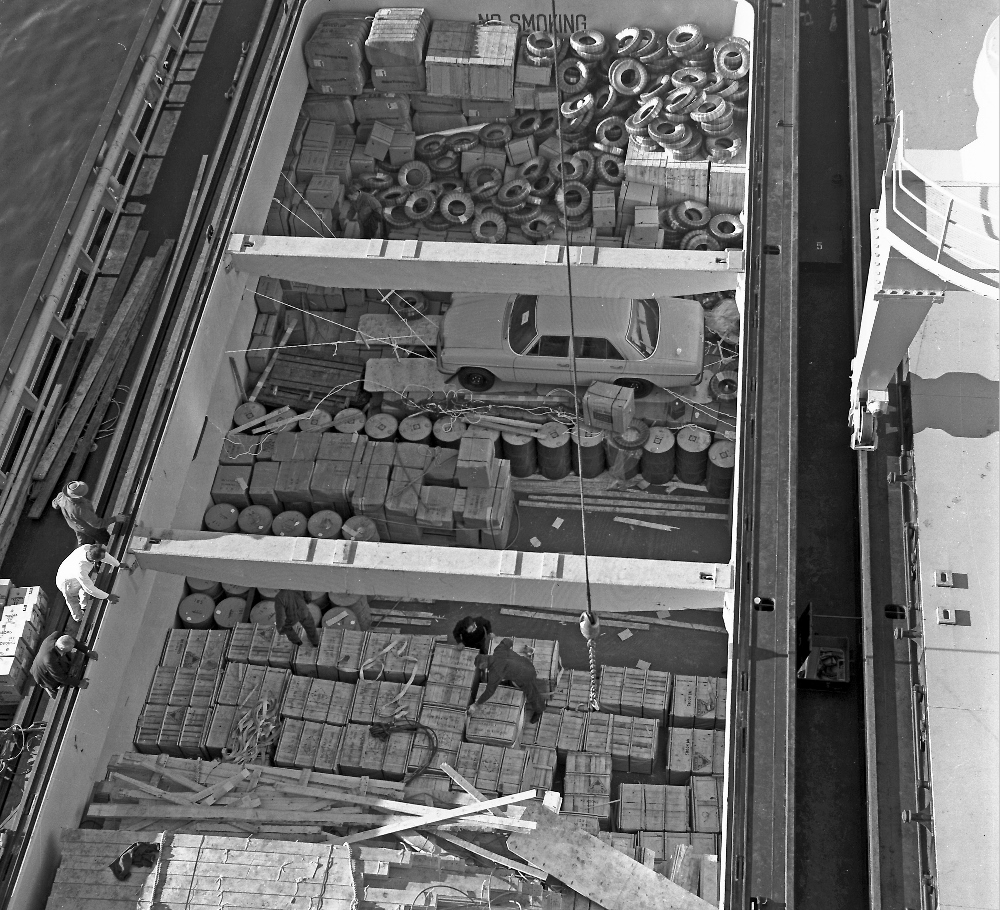
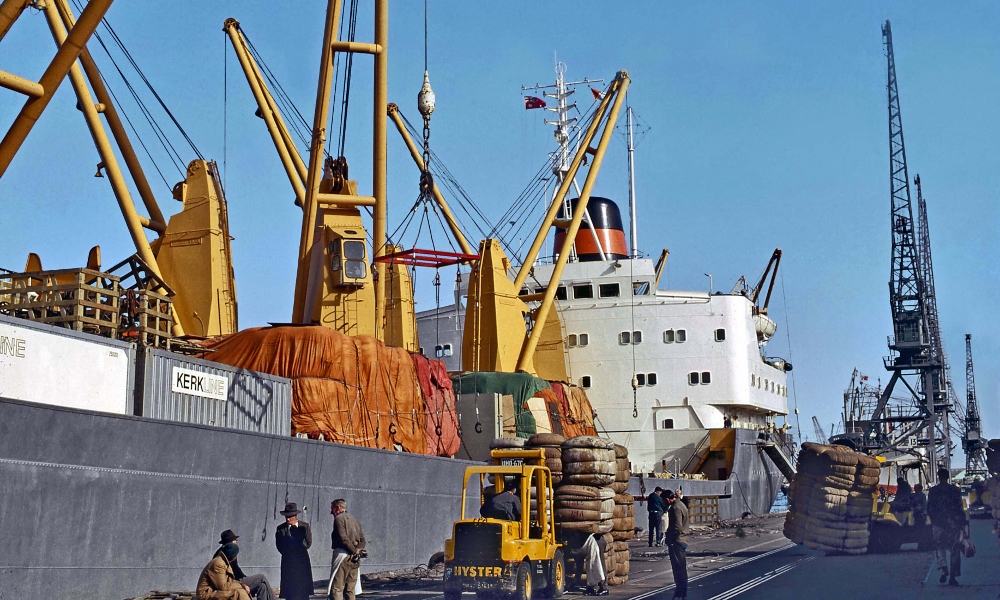
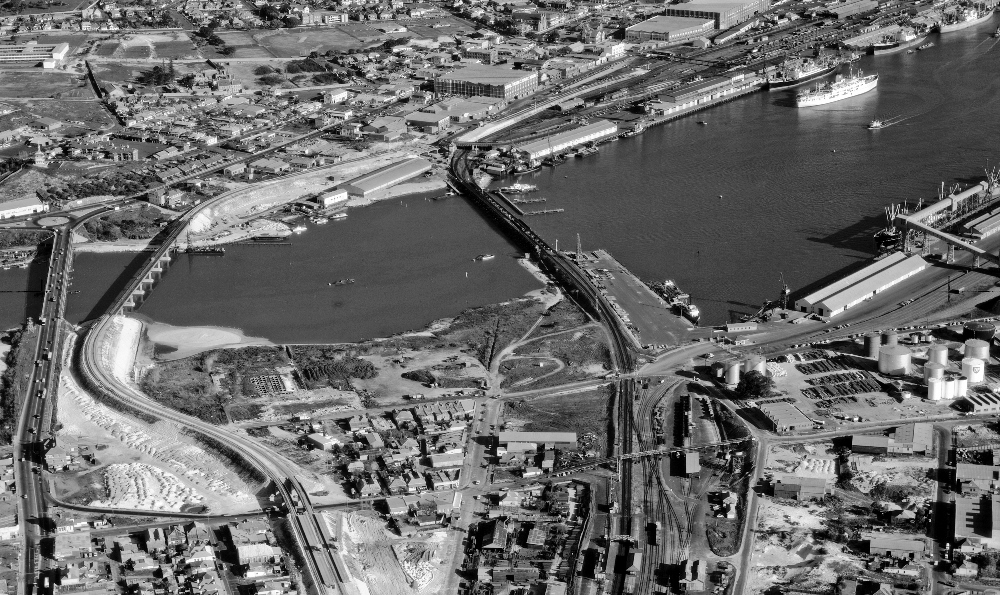
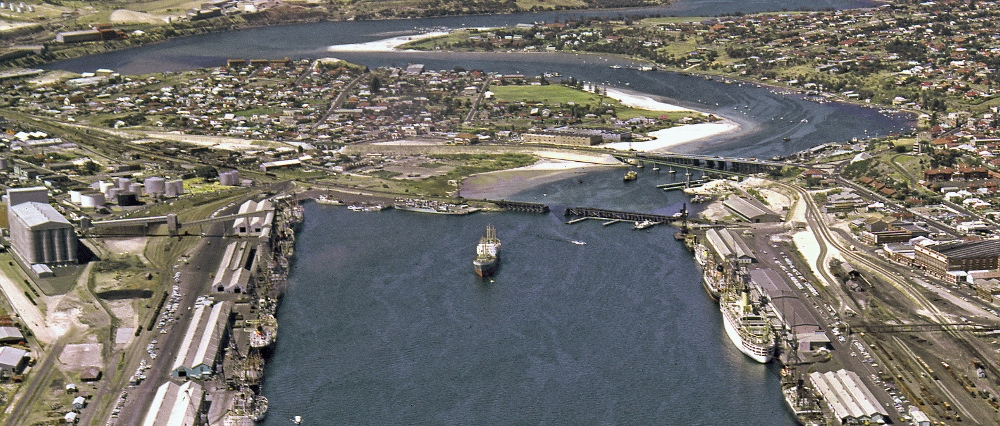
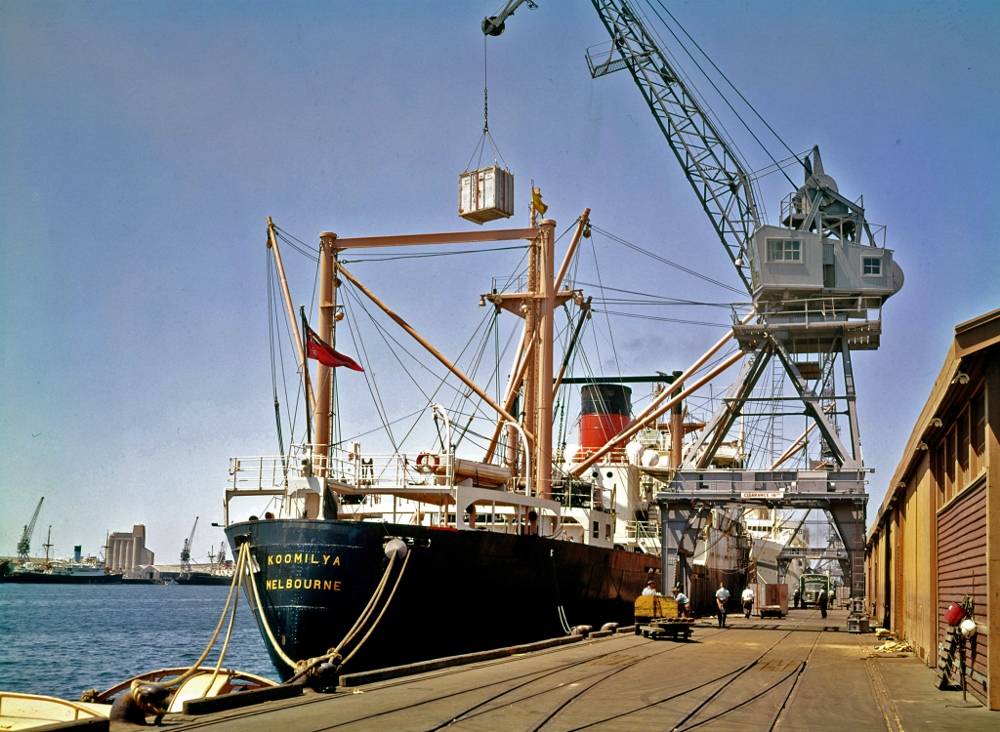
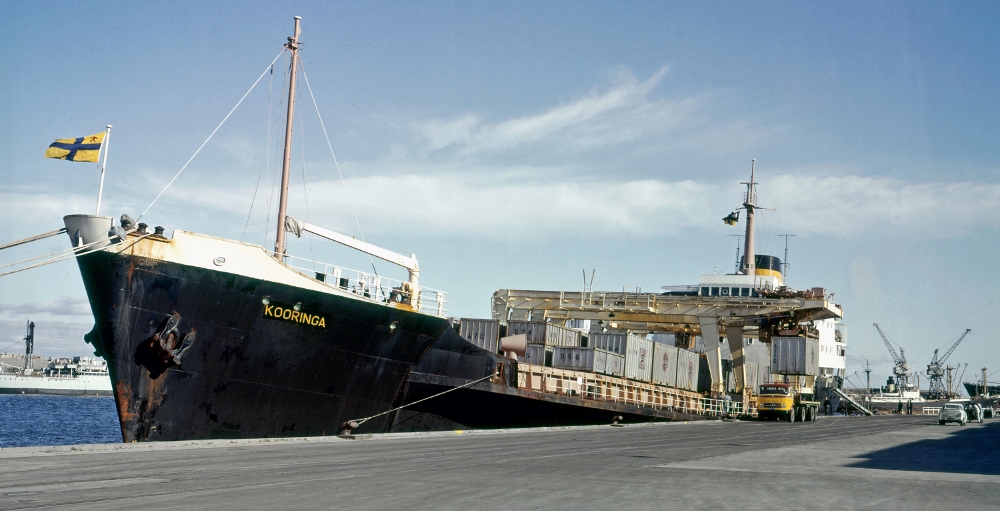

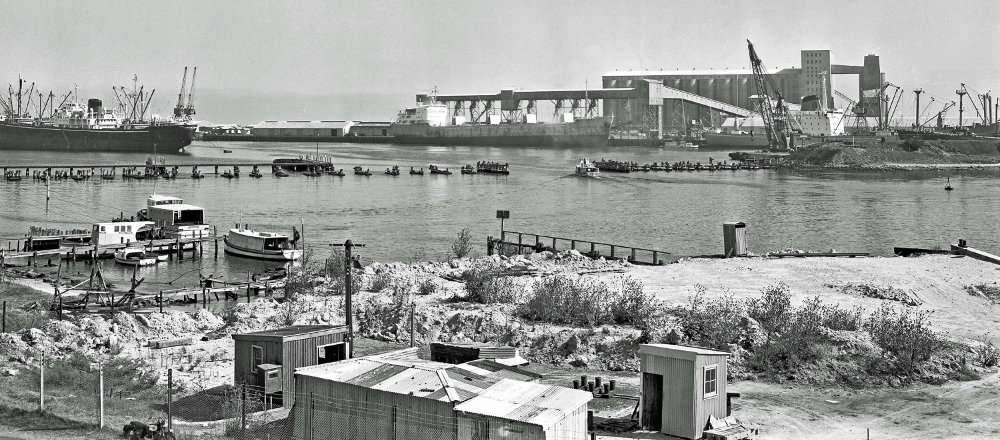
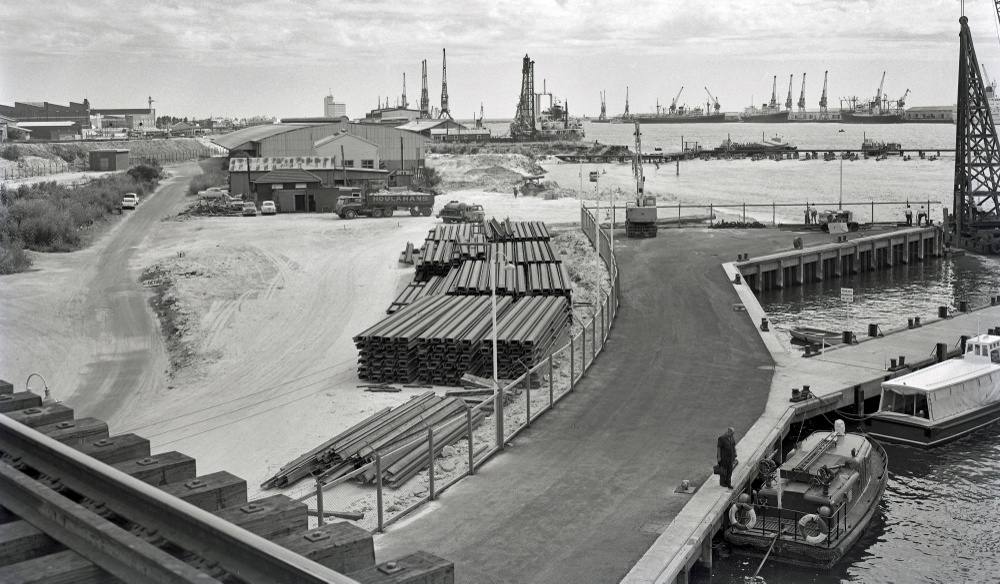
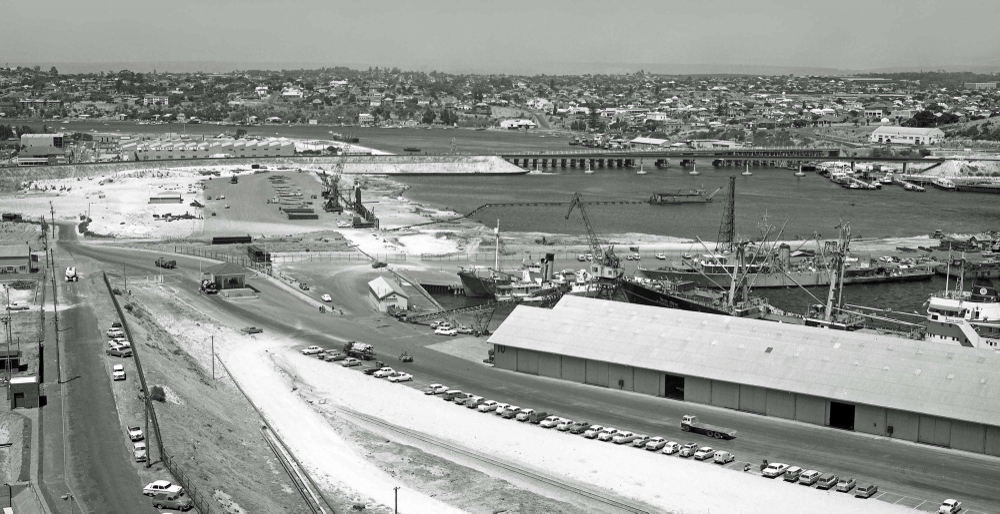
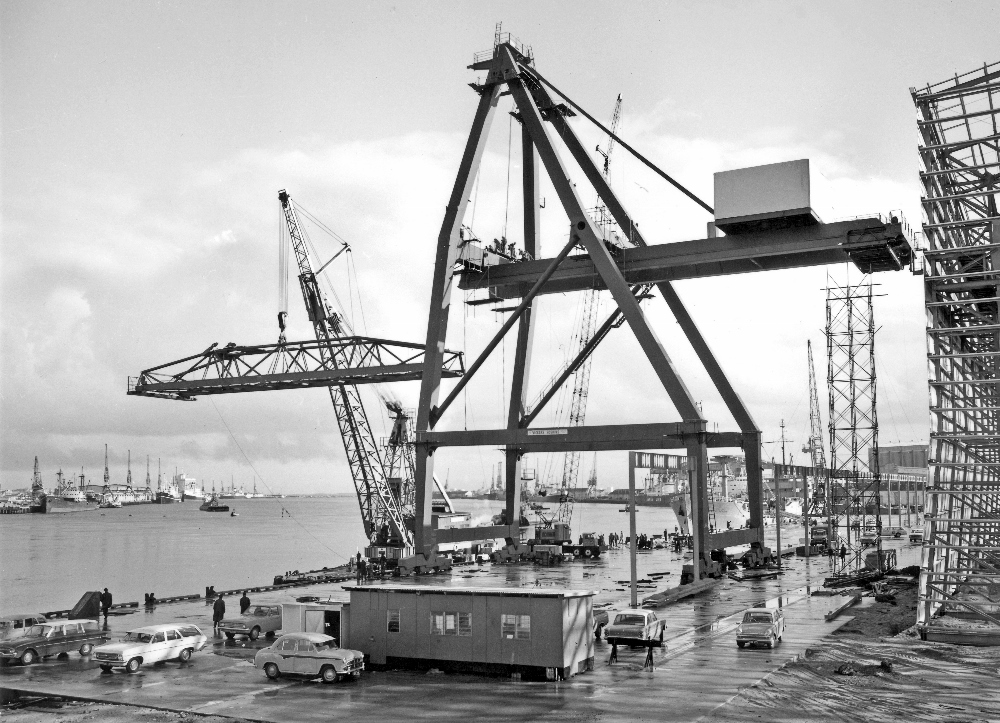
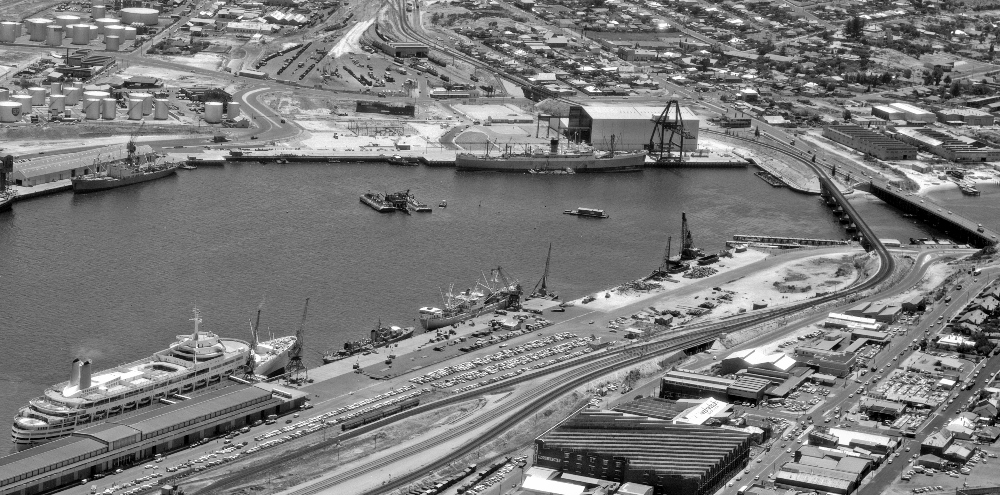

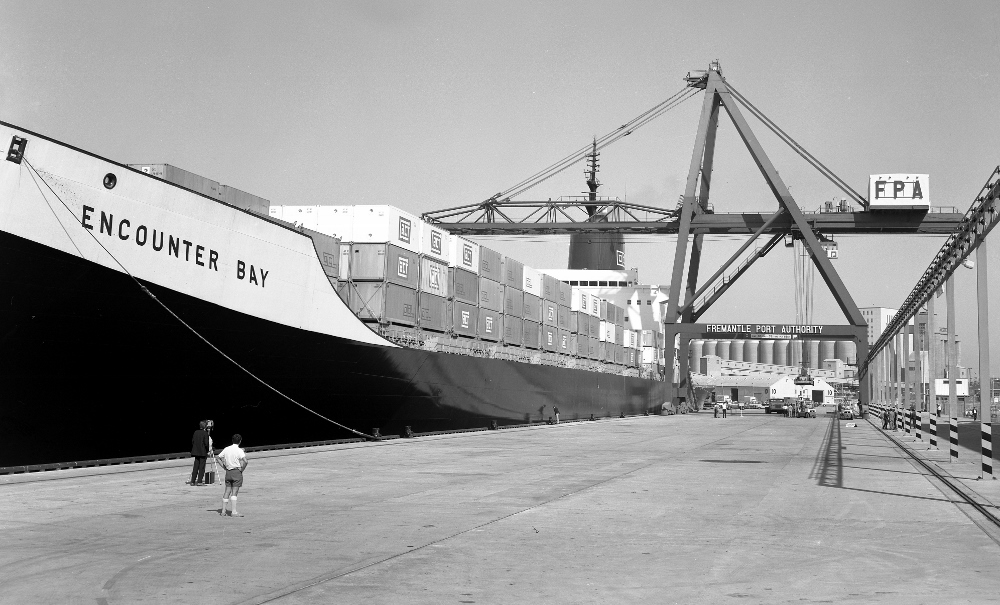
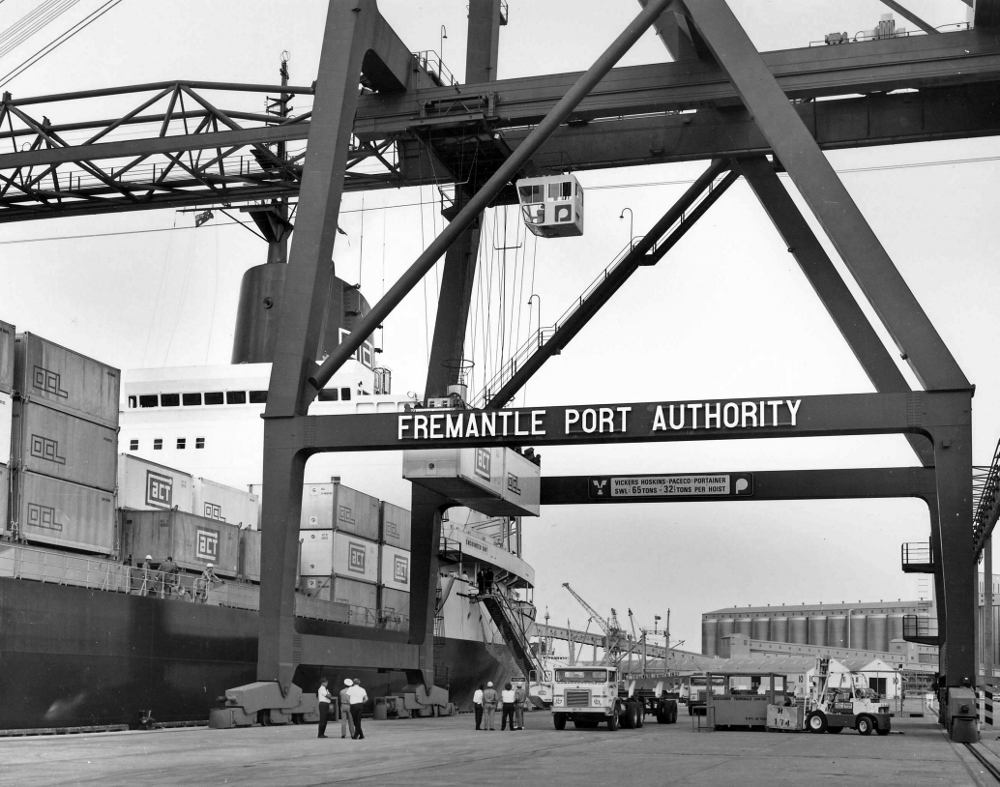
.jpg?sfvrsn=2f6f8363_2)
.jpg?sfvrsn=dfe6ada3_2)
